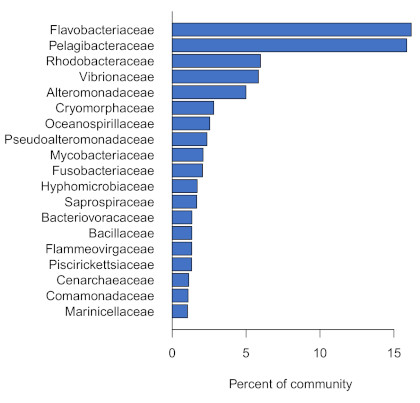AquaBiomics
New member
Hi everyone,
Most of us in the hobby are aware of the roles microbes play in our tanks, but very little information about these microbes has been available.
I wanted to bring to your attention a recent survey of microbial communities in home aquariums that we've recently completed. This analysis is based on DNA sequencing of water samples from hobbyist tanks. A few of the key findings:
There are endless questions left to answer in this field... this survey provides a baseline for understanding the typical aquarium microbiome. In future experiments and articles, I'll explore how we can best establish and adjust the microbiome in our aquariums.
You can read more here. I'll be curious to hear what you think!
-Eli

Most of us in the hobby are aware of the roles microbes play in our tanks, but very little information about these microbes has been available.
I wanted to bring to your attention a recent survey of microbial communities in home aquariums that we've recently completed. This analysis is based on DNA sequencing of water samples from hobbyist tanks. A few of the key findings:
- The water of established reef tanks contains several hundred different kinds of microbes (400, on average).
- These include microbes with known roles in maintaining water quality, and also known pathogens.
- The microbiome of a typical aquarium is dominated by a few families that are also among the most abundant in the ocean.
- The aquarium microbiome is mostly composed of Bacteria, but some of the few Archaea present have important roles in maintaining water quality.
There are endless questions left to answer in this field... this survey provides a baseline for understanding the typical aquarium microbiome. In future experiments and articles, I'll explore how we can best establish and adjust the microbiome in our aquariums.
You can read more here. I'll be curious to hear what you think!
-Eli

The relative abundance of each family in the core microbiome of a typical saltwater aquarium.
